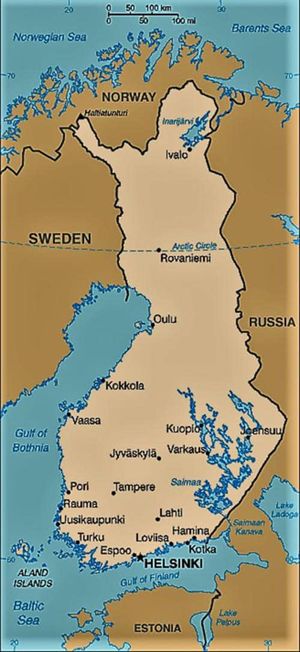Finland gained independence from Russia in 1917. During World War II, it defended its independence through cooperation with Germany and resisted subsequent invasions by the Soviet Union. In the late twentieth century, Finland transformed from a farm/forest economy to a diversified industrial economy. It has been a member of the EU since 1995.
Neighbours: Norway, Sweden, Russia.
Climate: Cold temperate; but comparatively mild because of the North Atlantic Current, Baltic Sea and more than 60,000 lakes.
Ethnic groups: Finn 93.4, Swede 5.6, Russian 0.5, others 0.5 per cent.
Religions: Lutheran 74, Orthodox 1, others 25 per cent.
Population: 5.5 million, but aging.
Capital: Helsinki 1.2 million.
Urbanisation: 85 per cent.
Life expectancy at birth: 80.8 years
Economy: Finland has a strong manufacturing base in wood, metals, engineering, telecommunications and electronics. It depends largely on the imports of raw materials and energy. Forestry, an important export industry, provides a secondary occupation for the rural population.
Source: CIA







